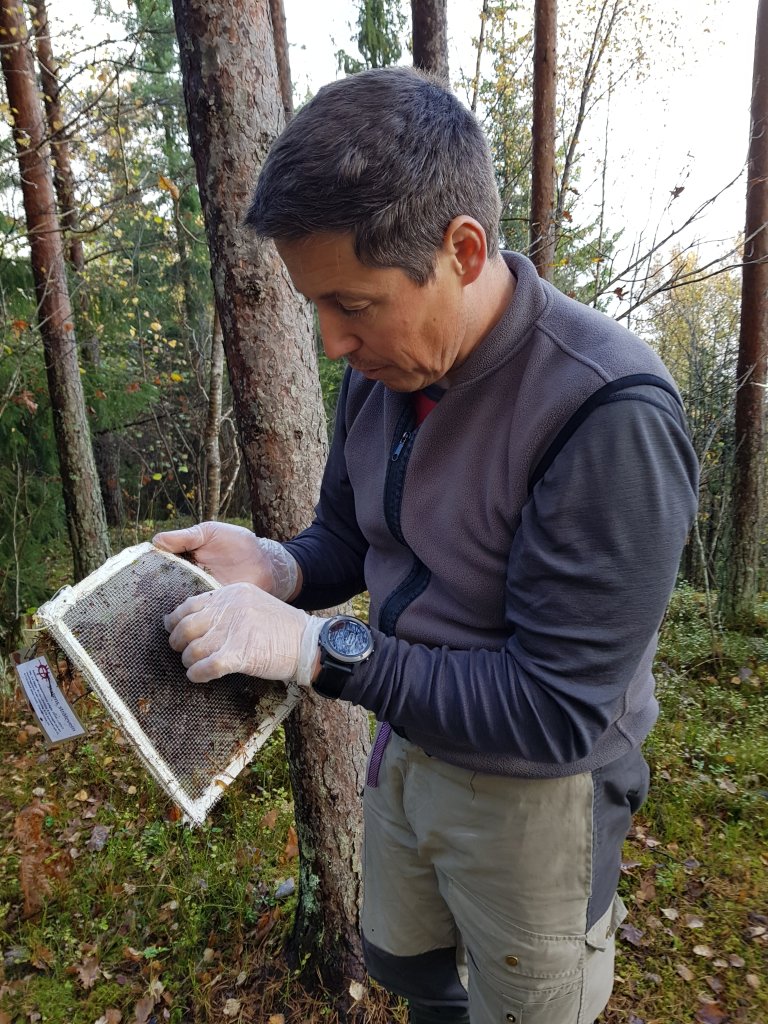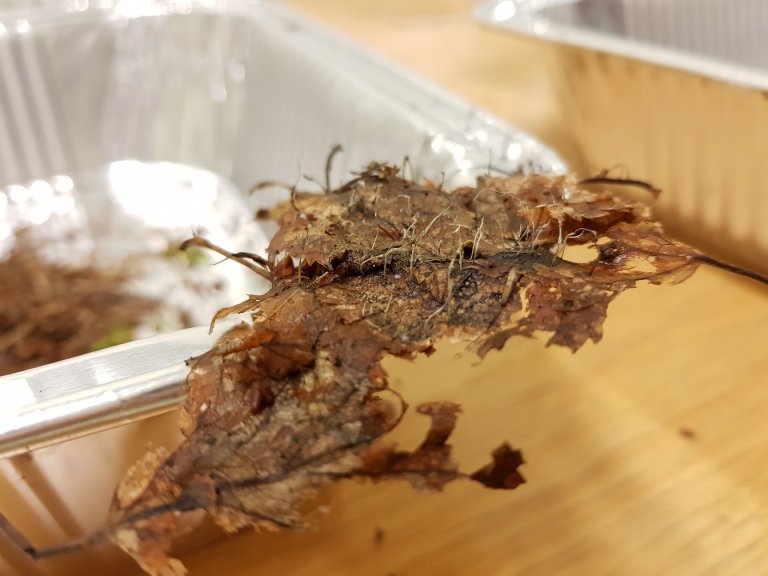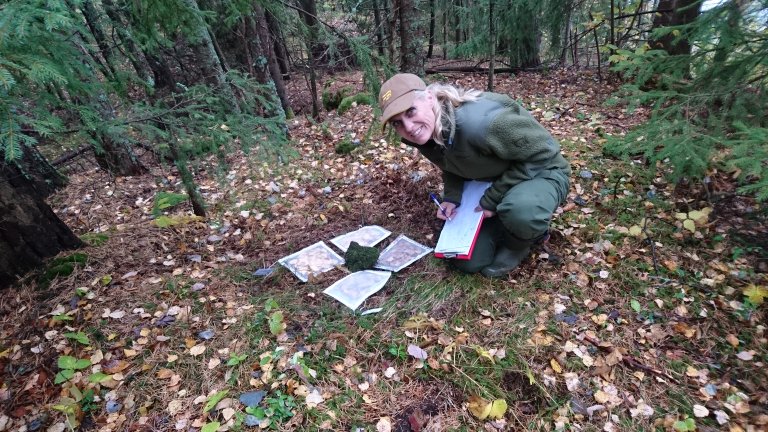The research was carried out by placing 100 litterbags with a standardized amount of dried leaves, in an area with increased natural radioactivity in the soil for one year. Half of the bags were fine meshed (0.1 mm), while the other half had holes large enough for the medium-sized soil fauna to enter (2 mm).
Soil fauna is a collective term for the organisms that live in the soil. The typical organisms from the medium-sized fauna are springtails, pot worms and earthworms, while fungi and bacteria are much smaller in size. All of these organisms take part in decomposing of the dead organic matter in the soil.

- When we looked at the amount of leaves left in the bags after one year, and took into account other important variables, such as pH in the soil and other parameters, we saw that the degradation of the leaves was slower where the radioactivity in the soil was higher. We assume that this is due to the ionising radiation that soil fauna is exposed to and which might have a negative effect, says researcher Hallvard Haanes (DSA). He has completed the study together with his colleague Runhild Gjelsvik.
- Without soil fauna fragmenting and eating the leaves, the decomposition would have taken much longer time. These fragments and faeces make the nutrients in the leaves much more readily available to fungi and bacteria, which in turn release these nutrients to the soil so that the plants can take them up again and grow. Therefore, we wanted to know whether the radioactivity in the area affects the activity of these soil organisms. Our findings clearly show that, says Haanes.

What surprised the researchers the most was that despite the fact that it is radionuclides in the thorium series that dominate in Gruveåsen, it was radionuclides in the uranium series that gave the greatest effect. This is probably due to the fact that uranium, in addition to being radioactive, is also chemically toxic, which probably have an added effect.
- The reason why we have conducted the study in Gruveåsen in Fen, is that there are relatively high levels of natural radioactivity there. Not high enough that it represents a direct danger to people in the neighbouring areas, but high enough to make us curious about whether it could have some biological effects, Haanes explains.
The results from the study give a first indication of the potential effects that even low levels of radioactivity could have on the soil fauna over time. This knowledge can be important to assess consequences of a potential nuclear accident. The study also shows that there is a need for more research examining how radioactivity and toxicity to the different radionuclides have different effects.

The project was funded by the Centre for Environmental Radioactivity (CERAD), and will be presented as a highlight in their annual report. The results of the study have also been published in the renowned journal PLOS ONE. The whole article can be read here:
https://journals.plos.org/plosone/article?id=10.1371/journal.pone.0247793

